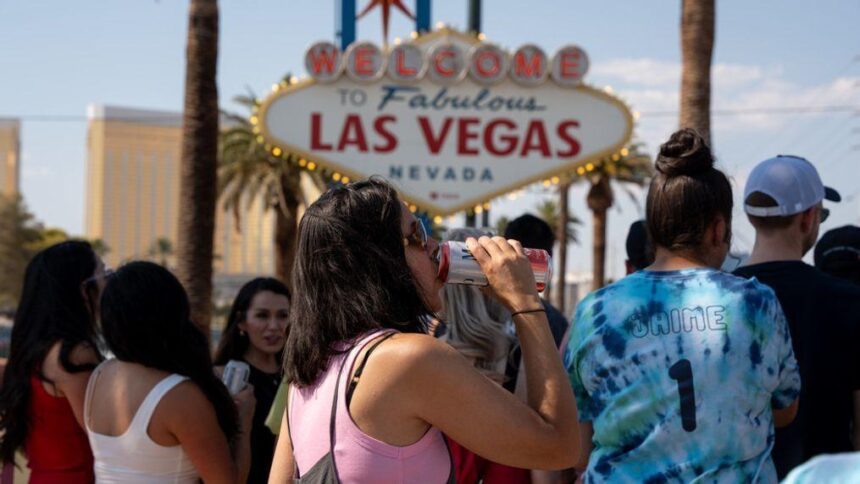Las Vegas Launches Vital Initiative to Combat Extreme Heat Hazards
Understanding the Rising Threat of Extreme Heat in Las Vegas
With summer temperatures in Las Vegas frequently surpassing 110°F, city officials and health organizations have initiated a comprehensive public health campaign to educate both residents and tourists about the severe risks associated with extreme heat exposure.This effort combines educational outreach, social media engagement, and the deployment of cooling stations throughout the city to safeguard those most vulnerable, including seniors, young children, and outdoor laborers.
The campaign’s core objective is to reduce heat-related emergencies and fatalities by equipping the community with practical knowledge and resources to recognize and respond to heat-induced health issues.
Essential Heat Safety Practices Promoted
- Maintain consistent hydration by drinking ample water while steering clear of dehydrating drinks like alcohol and caffeinated beverages.
- Take regular breaks in shaded or air-conditioned environments to prevent overheating.
- Opt for breathable, light-colored clothing and protective headwear such as wide-brimmed hats.
- Stay connected with neighbors and family members who may be at increased risk during heat waves.
| Heat-Related Condition | Symptoms to Watch For | Recommended Response |
|---|---|---|
| Heat Exhaustion | Profuse sweating, dizziness, nausea | Relocate to a cooler spot and drink fluids immediately |
| Heat Stroke | Elevated body temperature, confusion, loss of consciousness | Call emergency services and administer first aid if trained |
| Dehydration | Dry mouth, headache, reduced urination | Increase fluid intake and rest |
Expert Recommendations: Prioritize Hydration and Seek Shade
Medical professionals stress the critical importance of staying hydrated and avoiding prolonged sun exposure during the peak heat hours in Las Vegas. Recent data indicates a important uptick in heat-related hospital visits,underscoring the urgency of adopting preventive behaviors. Carrying water bottles, consuming electrolyte-enhanced drinks, and scheduling outdoor activities during cooler parts of the day are strongly advised.
In addition to fluid intake, utilizing shaded areas such as parks, community centers, and bus stops can dramatically reduce the risk of heat exhaustion and heat stroke. The campaign also encourages the use of sun protection measures like applying broad-spectrum sunscreen and wearing protective hats to shield against harmful UV rays.
- Consume a minimum of eight glasses of water daily.
- Frequently rest in shaded or air-conditioned locations.
- Wear loose, light-colored garments to reflect sunlight.
- Plan outdoor activities for early mornings or late evenings when temperatures are lower.
| Heat-Related Symptom | Suggested Action |
|---|---|
| Headache and Lightheadedness | Seek shade and hydrate immediately |
| Excessive Sweating | Rest in a cool environment |
| Nausea | Drink fluids with electrolytes |
| Muscle Cramps | Stretch gently and replenish fluids |
Community Call to Action: Supporting At-Risk Neighbors
In light of the extreme heat conditions, local authorities urge residents to actively check on neighbors who might potentially be particularly susceptible to heat-related health issues. This includes the elderly, individuals with chronic health conditions, and those with limited mobility or access to cooling resources. Simple acts such as phone calls or brief visits can be crucial in preventing heat emergencies.
Guidelines for Assisting Vulnerable Individuals
- Verify that cooling devices like fans or air conditioners are operational.
- Encourage regular hydration with water or electrolyte drinks.
- Monitor for early signs of heat exhaustion or heat stroke.
- Offer help with errands such as grocery shopping or medication pickup.
| At-Risk Group | Recommended Support |
|---|---|
| Seniors (65+) | Regularly check cooling systems and hydration |
| Infants and Young Children | Ensure access to shade and fluids |
| Chronic Illness Patients | Monitor medication adherence and hydration levels |
| Individuals with Mobility Challenges | Assist with daily errands and transportation |
Practical Strategies for Navigating Record-High Temperatures
As Las Vegas experiences unprecedented heat waves, adopting proactive measures is essential to safeguard health. Staying well-hydrated remains the cornerstone of heat safety, with an emphasis on avoiding drinks that exacerbate dehydration. Wearing breathable, light-colored clothing and applying high-SPF sunscreen can help prevent heat-related skin damage and exhaustion.
Limiting outdoor exposure during the hottest hours—typically from 10 a.m. to 4 p.m.—and seeking refuge in air-conditioned or shaded spaces are critical steps. Recognizing early warning signs such as rapid heartbeat, confusion, and excessive sweating can facilitate timely intervention and prevent serious complications.
- Regularly check on vulnerable community members.
- Utilize designated cooling centers provided by local authorities.
- Avoid strenuous physical activity during peak heat periods.
- Never leave children or pets unattended in parked vehicles.
| Heat-Related Symptom | Immediate Response |
|---|---|
| Heat Exhaustion | Relocate to a cool area and hydrate |
| Heat Stroke | Call 911 immediately and initiate rapid cooling |
| Heat Cramps | Rest and consume electrolyte-rich fluids |
Final Thoughts: Staying Safe Amidst Las Vegas’ Intense Heat
As the mercury climbs to historic levels in Las Vegas, awareness and preparedness are more crucial than ever. This public health campaign underscores the importance of simple yet effective precautions to prevent heat-related illnesses and fatalities. By embracing these guidelines and fostering community support, residents and visitors alike can navigate the sweltering summer months with greater safety and confidence.
